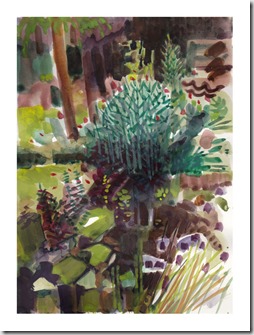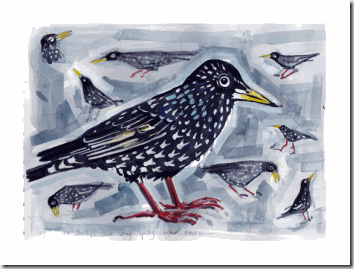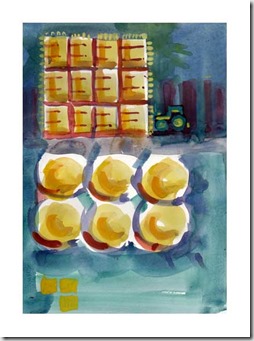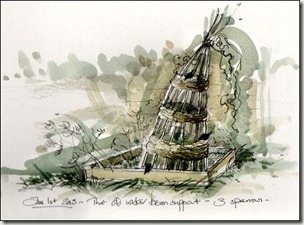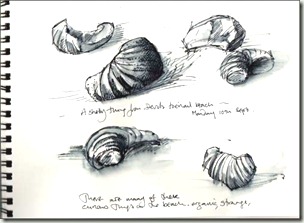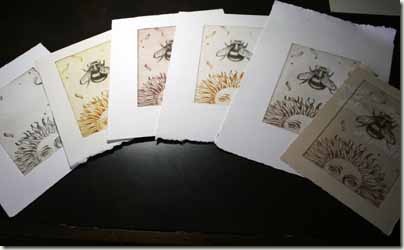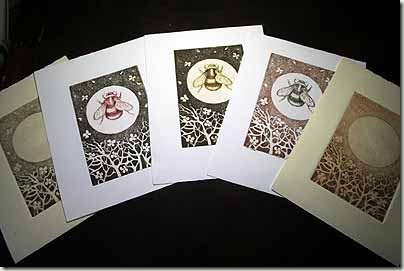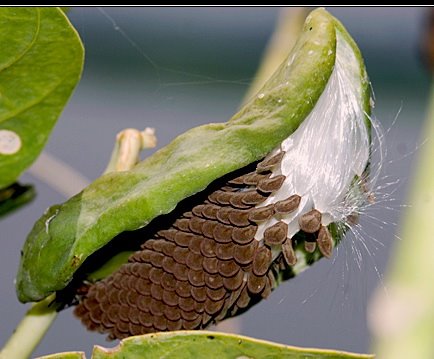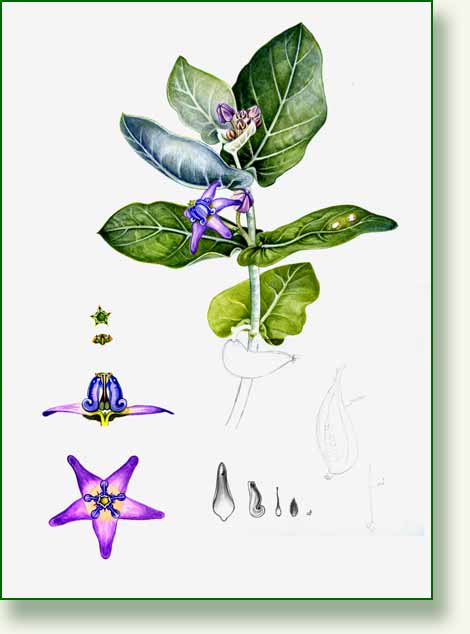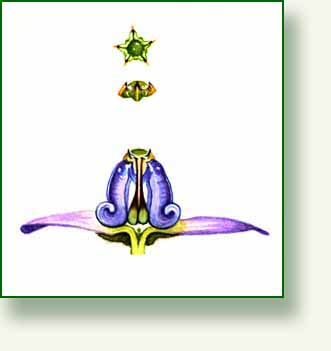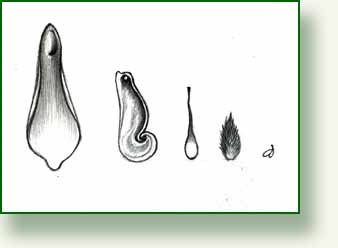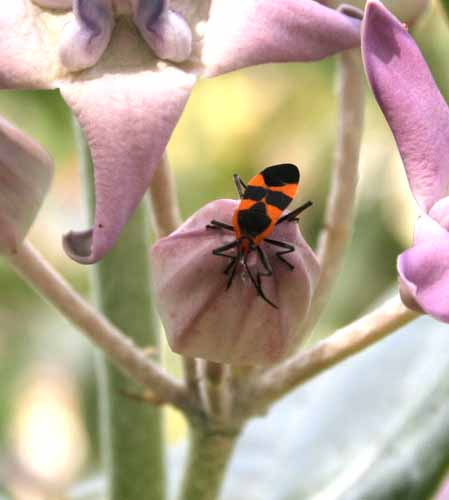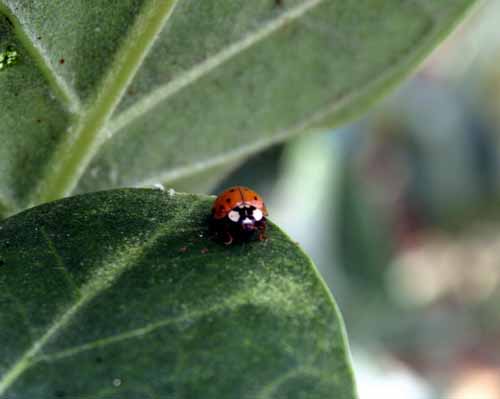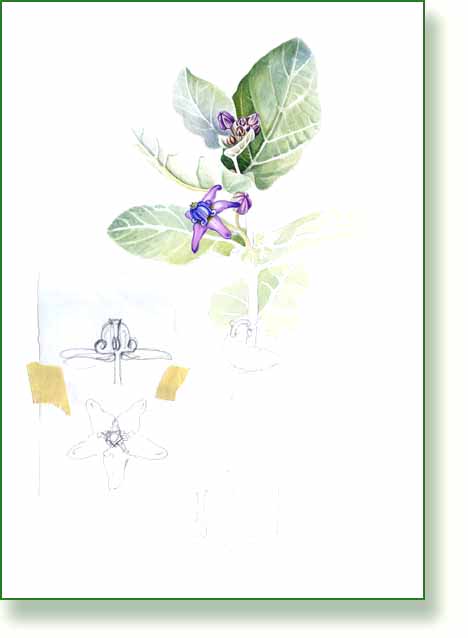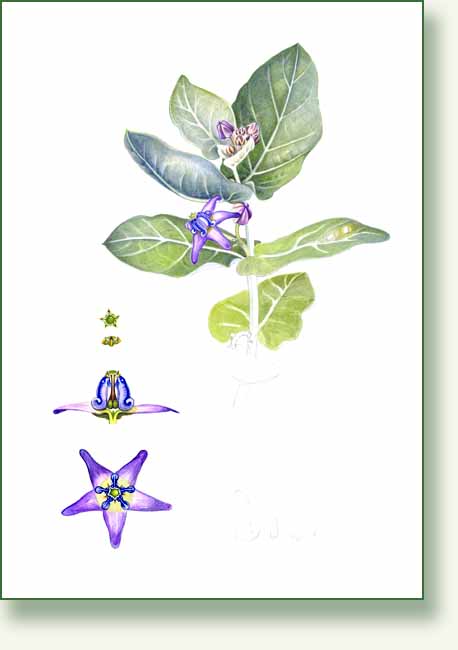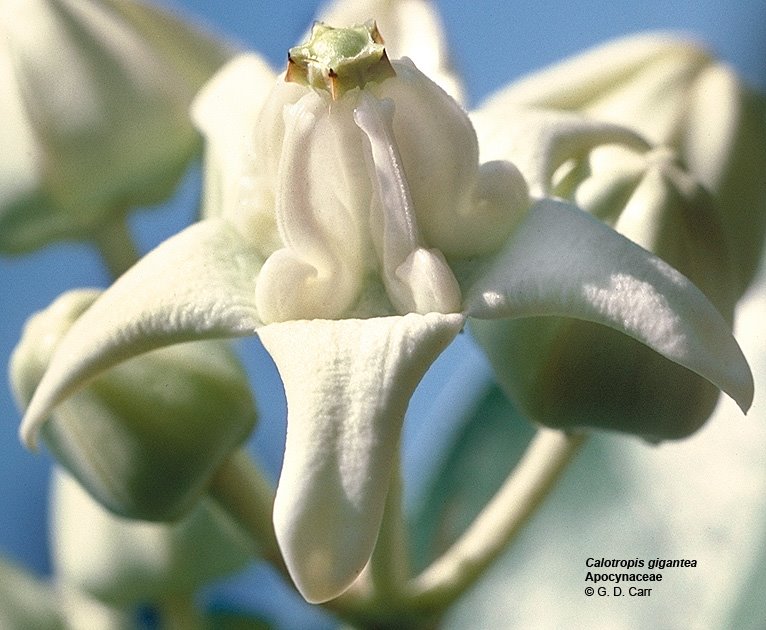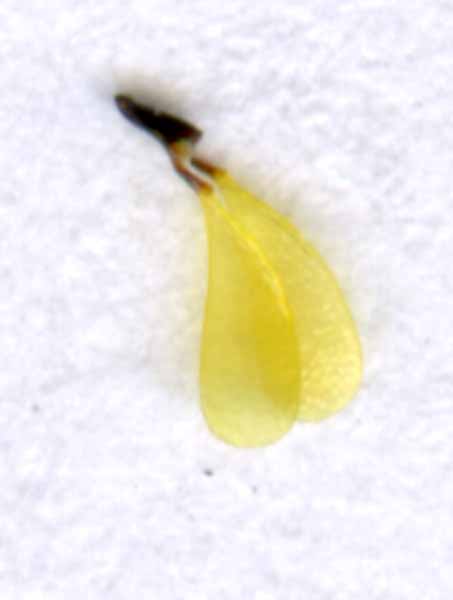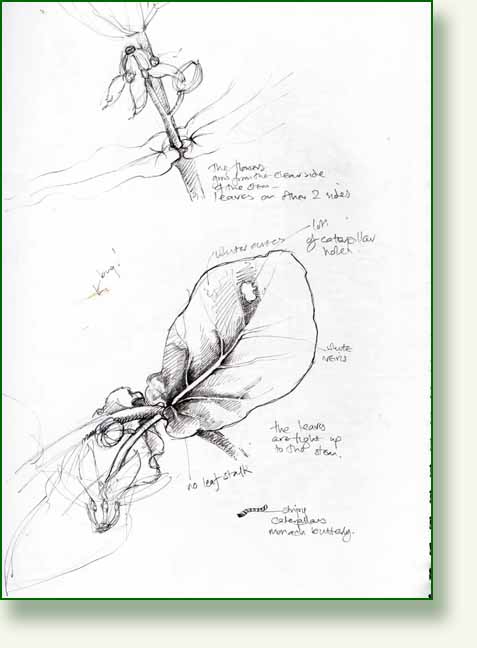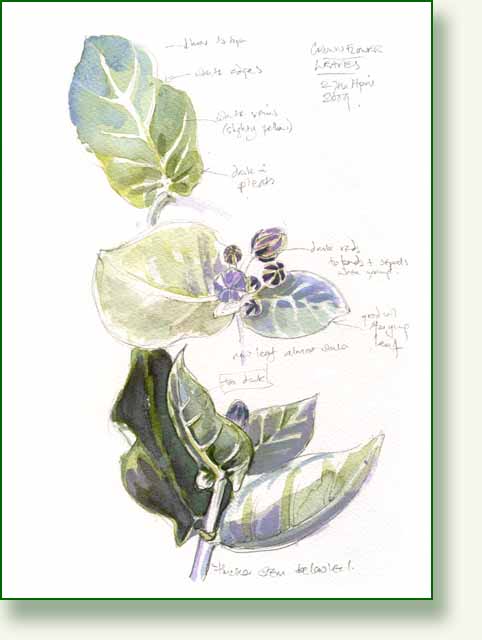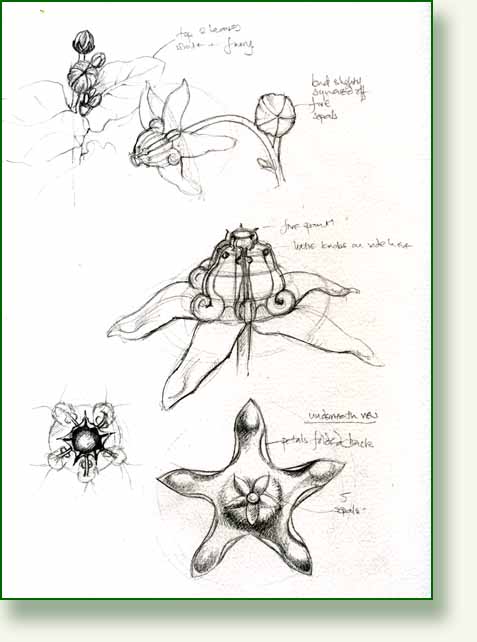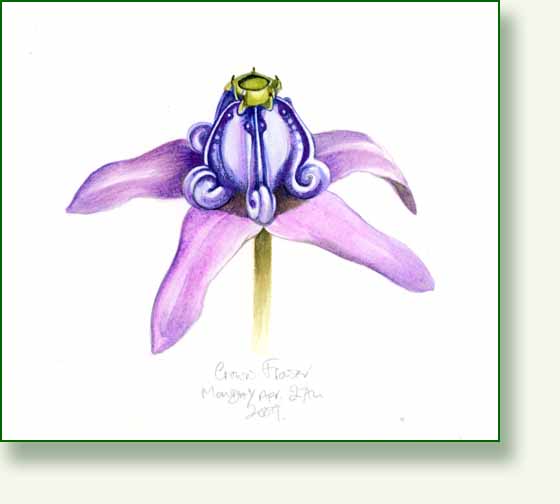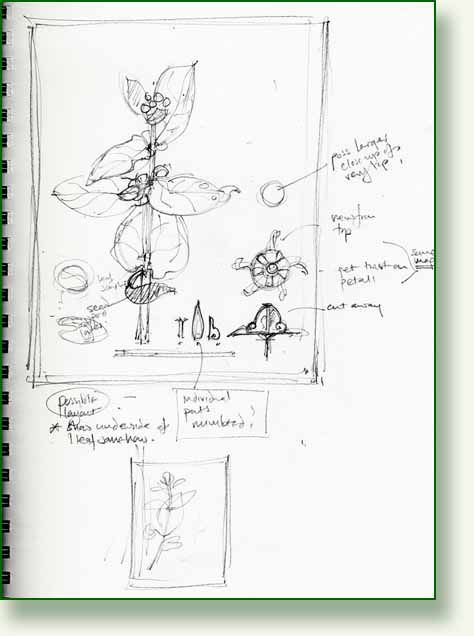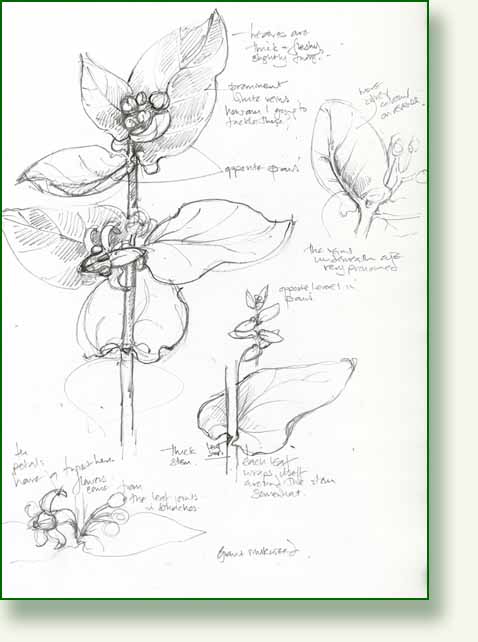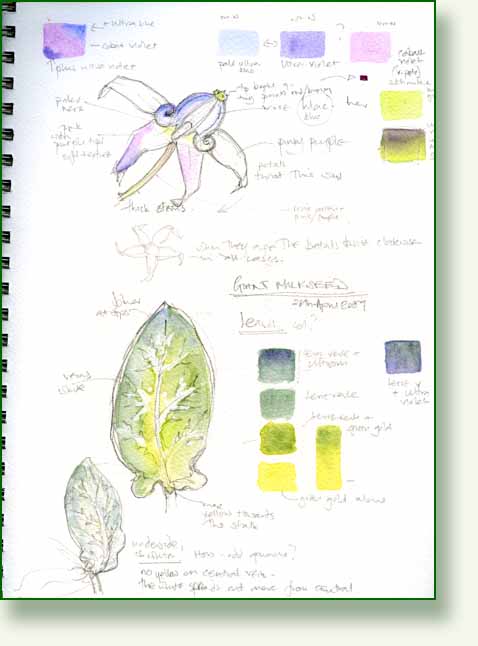Week one of my daily sketches. Although they will eventually make a rather haphazard garden record, they are much more to do with the discipline of a bit of daily practice.
Through the Window I am still not very mobile so I am sitting by the window and drawing what I can see. The sketches have to be done early or the day gets away from me and they have to be quick, no more than 30 mins. I am keeping the size (10 x7 inches) constant for this month, then I can bind them into a “January” book.

1st Jan. The wicker bean support and 3 sparrows, as in my first of Jan post, Recording a Gardening Year.

2nd Jan.
Old blackened sunflower heads that I can see through the window. I hobbled out to look at them and thought that, sometime, I might bring one in and make a study. They are fascinating things. Their huge hanging heads are heavy-looking and but are as light as a feather. Their forms tell of a weight and substance that was once there but has long gone. They are not what they seem.

3rd Jan.
The fence line at the back of the garden. There are a few small trees, an un-named apple, the tall wild cherry, a crab apple, a russet apple ( it had just one apple this year) a section of laurel hedge and a twisting crab apple tree in the next garden. This is how it looked when we came last year. In the summer it is dense. This was watercolour and brush…no pen on this one.

4th Jan:
The twisting branches of a now dead shrub on the SW border fence We left it because the birds like the tall branches. A few reddish berberis leaves on the right.

5th Jan:
Over by the shed are two old chimney pots. Last year I planted them with geraniums and lobelia. Just the twiggy stems of the lobelia are left. and a couple of old yellowed leaves of a shrub.

6th Jan:
Dusk. Yesterday at 4.20 pm it was dusk, but a luminous dusk. A moment or two when all the colours are deeply saturated before slipping into monochrome greys. Amongst these dark colours, were a few glowing silvery brights, the stachys, the silver buds of the magnolia,shining like tiny fairy lights and some old globe artichoke leaves. I wanted to make a quick record so I pre-washed the page the day before with mid grey to give a base for the sketch.
My cheap scanner is a blunt tool which has the astonishing capacity to reduce a myriad of colours to just 2. It looks very monochrome here but in reality it’s a bit more colourful.

7th Jan:
A last sketch for week 1. Weeds growing outside my window. I changed paper from Not to HP. I like HP for smaller work. It holds a beautiful crisp edge

Weed:
On Sunday I had a little extra time and made a small study of another weed. One of the many that grow exuberantly between the paving slabs. After a few weeks away from the drawing board I have felt hesitant and rusty. Next week will be better.
Why do a daily drawing? For me, it’s partly to keep me “looking”, partly to to keep my hand/brain coordination working. It’s the “doing” of it that’s important, not the end result.
Whatever your discipline, you need skills. The ideas in your head need a route out. I have more ideas than I could ever realise, but often it’s a lack of skill to make them work that is both the deepest frustration and the greatest barrier to progress.
The only way I can deal with that is to practise, practise, practise; brush work, pen strokes, colour mixing, thinking, reading, looking, looking again, being my own most severe critic, tearing it all up and starting again. If nothing else the sketching is beginning to help me understand what I am trying to do and how perhaps I can achieve it.
For me, Hokusai’s wise and well know observations ring very true. I have quoted this before on the blog and keep it pinned up next to my drawing board. I am always encouraged that his most significant works were done later in life, from 60 onwards. He began publishing “One Hundred Views of Mount Fuji” in his seventies. He was, however, a genius and I am not.. but hope springs eternal. Practise practise practise…
“From around the age of six, I had the habit of sketching from life. I became an artist, and from fifty on began producing works that won some reputation, but nothing I did before the age of seventy was worthy of attention. At seventy-three, I began to grasp the structures of birds and beasts, insects and fish, and of the way plants grow. If I go on trying, I will surely understand them still better by the time I am eighty-six, so that by ninety I will have penetrated to their essential nature. At one hundred, I may well have a positively divine understanding of them, while at one hundred and thirty, forty, or more I will have reached the stage where every dot and every stroke I paint will be alive. May Heaven, that grants long life, give me the chance to prove that this is no lie.” Katsushika Hokusai, from the postscript to “One Hundred views of Mount Fuji”



